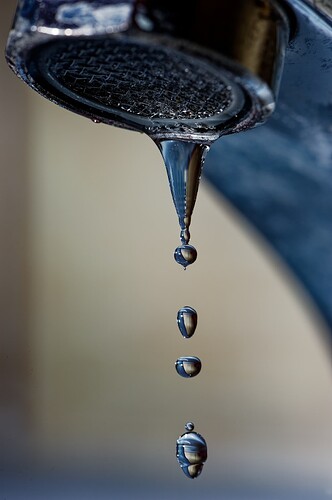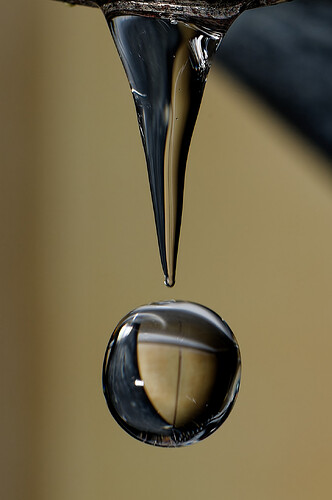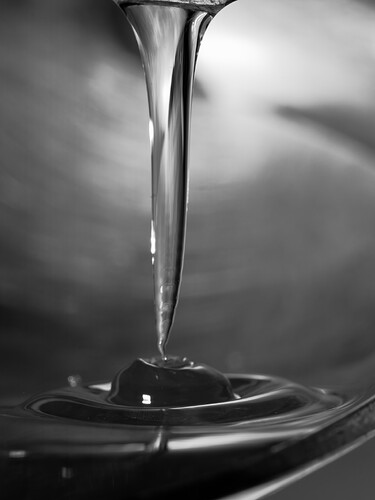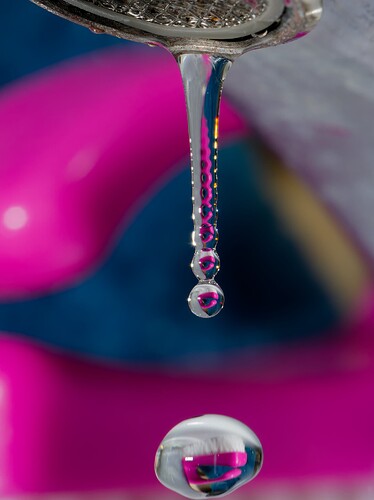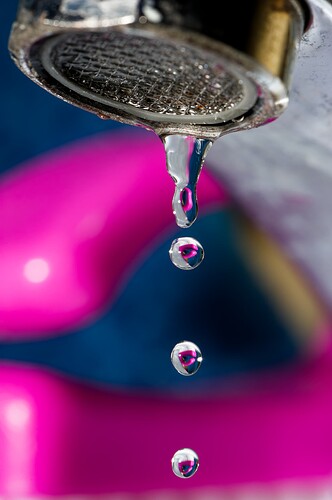Interesting topic and image
I was always fascinated by the fact that nature’s harmony is far more complex than humans would expect. Just look at finite simple groups classification. The reality is not always as simple as we would like, or as our perception is build. But even with our oversimplified view, the nebulas are still beatiful, aren’t they?
Some less intriguing droplets examples:
The bokeh in pink-blue photos was too busy, and I had to calm it down with strongly negative microcontrast, counteracting with some fine contrast. It would be nice, if I could use fine-contrast sliders only for specific hue ranges…
How did you find the right moment?
Randomly ![]() Honestly, hard to say, but I had some experience before with fast action photos which were better single-shot rather than using serial shots. You just learn to feel when the drop fails and know your brain latency. The photos were taken some 15 years ago with D700 (12mp) + 105/2.8 Macro + SB-800 with shutter speed = 1/8000 sec, ISO 800, f/32, AF manual. I was learning my new camera then.
Honestly, hard to say, but I had some experience before with fast action photos which were better single-shot rather than using serial shots. You just learn to feel when the drop fails and know your brain latency. The photos were taken some 15 years ago with D700 (12mp) + 105/2.8 Macro + SB-800 with shutter speed = 1/8000 sec, ISO 800, f/32, AF manual. I was learning my new camera then.
Of course, there are millions of better droplet photos around. See for example
- https://photofocus.com/photography/creating-liquid-for-waterdrop-photography/
- https://www.artic.edu/artists/34357/harold-eugene-edgerton – classic Milk Drop Coronet, Shooting the Apple, A-bomb.
- https://www.pexels.com/photo/water-dew-on-green-leaf-235672/
- Beautiful water droplet photos captured with creative technique | The Independent | The Independent – flower
- https://photofocus.com/photography/preparing-to-capture-water-droplets/
- A new way to make droplets bounce away | MIT News | Massachusetts Institute of Technology
- Capturing Water Droplets: A Quick How-To On Getting that Perfect Shot | OM SYSTEM
just fantatic, thank you for sharing these pics with us.
I would be pretty happy if my shots looked even half as good as yours - inspiring!
Thank you, but it’s more about determination and luck (randomness). I was just curious how 1/8000s shutter works together with FP flash mode (aka HSS). If I was more determined, I would prepare special ligth setups (e.g. stroboscopic?) and experiment with various liquids (viscosity, color), but then I would probably run into problems with my wife, who tries to keep me sane ![]() It’s nowhere near to Harold Eugene Edgerton ancient classics – Harold Eugene Edgerton | The Art Institute of Chicago .
It’s nowhere near to Harold Eugene Edgerton ancient classics – Harold Eugene Edgerton | The Art Institute of Chicago .
Btw, droplet photography became a business, it seems ![]() See https://www.dpreview.com/forums/post/51521960 or just search for “droplets photography kit”, “StopShot”, “MIOPS”, “SplashArt”, etc.
See https://www.dpreview.com/forums/post/51521960 or just search for “droplets photography kit”, “StopShot”, “MIOPS”, “SplashArt”, etc.
